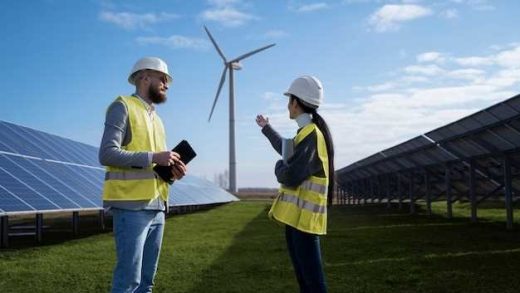
In the wide realm of harnessing solar energy to power our homes and establishments, there exist various options to consider. These alternatives, each possessing distinct features and benefits, can propel us towards a future reliant on renewable sources. Embracing the concept of sustainability requires a thoughtful examination of the two primary configurations: grid-tied and off-grid solar systems. Both offer enticing possibilities and have their own advantages, catering to different needs and preferences. In this article, we delve into the intricacies of these configurations, exploring their unique characteristics and exploring their potential impact.
When it comes to grid-tied solar systems, the underlying concept centers around the connection to the central power grid. This configuration enables the seamless integration of solar-generated electricity into the existing power infrastructure. By leveraging this approach, one can tap into the electric grid whenever additional energy is required, thereby avoiding reliance solely on solar energy. This interconnectedness lends an invaluable advantage, as excess energy produced by the solar system can be conveniently fed back to the grid, allowing for potential compensation or credit from utility companies.
On the other hand, off-grid solar systems take a divergent path, emphasizing independence from the traditional power grid. Such setups are particularly useful in remote locations where utility access is limited or non-existent. Off-grid systems rely on battery storage, enabling the accumulation and storage of solar energy to be used during periods of low or insufficient sunlight. The self-sufficiency offered by off-grid systems is an attractive prospect for those seeking a sustainable solution that eliminates reliance on external power sources. Additionally, these systems foster resilience, providing a viable backup option during power outages or emergencies.
Understanding Solar Systems: Grid-Tied vs. Off-Grid Options
Exploring the intricacies of solar systems can be a fascinating journey. When it comes to harnessing the sun’s energy, there are two primary options to consider: grid-tied and off-grid solar systems. These alternatives offer different configurations and advantages, allowing individuals to tailor their energy solutions to meet their specific needs. In this section, we will delve into the key aspects of grid-tied and off-grid solar options, enabling a comprehensive understanding of their benefits and considerations.
Grid-tied solar systems are an interconnected network, where the solar panels are connected to the utility grid. They operate symbiotically with the grid, allowing excess energy to be fed back into the grid and enabling net metering, a practice that credits solar system owners for the energy they contribute. Grid-tied systems tend to be cost-effective, as there is no need to invest in batteries for energy storage. Additionally, they provide a reliable power supply, as any shortfall in solar generation can be supplemented from the grid. However, it’s important to note that grid-tied solar systems are dependent on the availability and stability of the utility grid.
Off-grid solar systems function independently of the grid, utilizing solar panels and batteries to generate and store energy. This autonomy grants individuals the ability to have electricity in remote locations or areas where the utility grid connection is not feasible or cost-effective. With off-grid systems, individuals have full control over their energy production and consumption. However, they require careful planning, as the capacity of the solar panels and batteries must be appropriately sized to meet the energy demands. Off-grid systems also require maintenance and monitoring to ensure optimal performance and battery health.
In conclusion, understanding the options between grid-tied and off-grid solar systems allows individuals to make informed decisions about their energy solutions. Whether seeking the flexibility and cost-effectiveness of a grid-tied system or the independence and self-sustainability of an off-grid system, both alternatives present unique advantages. By evaluating the specific requirements and considering factors such as location, budget, and energy demands, individuals can determine which configuration best suits their needs and goals.
Benefits of Grid-Tied Solar Systems for your Home
Maximizing the potential of solar energy is a smart choice for homeowners looking to reduce their carbon footprint and save on electricity costs. One popular configuration to consider is a grid-tied solar system for your home, which offers a range of benefits that make it a compelling option for many households.
1. Energy Cost Savings
A grid-tied solar system allows homeowners to generate their own electricity using the power of the sun. By harnessing solar energy, you can significantly reduce your reliance on traditional grid electricity and lower your monthly energy bills. With a grid-tied system, you have the advantage of being able to sell any excess energy your panels produce back to the grid, earning credits or even money from your utility company.
2. Environmental Sustainability
Choosing a grid-tied solar system means embracing a clean, renewable energy source. Solar power is a carbon-neutral alternative to traditional electricity generated from fossil fuels, making it an eco-friendly choice. By generating your own clean energy, you contribute to a cleaner environment, reducing greenhouse gas emissions and helping to combat climate change.
Furthermore, grid-tied solar systems require minimal land use and have a smaller environmental footprint compared to off-grid systems, which often rely on additional batteries for energy storage. This makes grid-tied systems a more sustainable and space-efficient solution for powering your home.
In conclusion, installing a grid-tied solar system for your home offers numerous benefits. From cost savings on energy bills to environmental sustainability, this configuration allows you to tap into the power of the sun and make a positive impact on both your finances and the planet. By embracing solar energy, you can take a step towards a greener and more energy-efficient future for your home.
Exploring the Advantages of Off-Grid Solar Systems
Discovering the Benefits of Stand-alone Solar Energy Systems
When it comes to harnessing the power of the sun, there are two main types of solar systems: grid-tied and off-grid. While grid-tied systems are connected to the local electricity grid, off-grid solar systems operate independently, providing an array of advantages that make them a compelling choice for many homeowners and businesses.
1. Energy Independence
One of the major advantages of off-grid solar systems is the ability to achieve energy independence. Unlike grid-tied systems that rely on a continuous connection to the grid, stand-alone solar systems operate autonomously with the use of energy storage solutions such as batteries. This means that even during power outages or in remote locations, off-grid systems can still generate and store electricity for use, allowing homeowners and businesses to maintain a consistent power source.
2. Cost Savings
Off-grid solar systems offer significant cost savings in the long run. By relying on self-generated solar energy, users can reduce or eliminate their monthly electricity bills. Additionally, off-grid systems often involve a one-time investment in solar panels, batteries, and other necessary equipment, which can ultimately result in substantial savings compared to the ongoing expenses associated with grid-tied systems.
3. Environmental Sustainability
Embracing off-grid solar systems enables individuals and organizations to take a proactive step towards environmental sustainability. By harnessing the power of renewable energy from the sun, off-grid users can significantly reduce their carbon footprint and decrease reliance on traditional fossil fuel-based energy sources. This not only helps combat climate change but also contributes to the overall preservation of the environment for future generations.
4. Flexibility and Versatility
Off-grid solar systems offer a high level of flexibility and versatility. As these systems are not limited by the availability of an electricity grid, they can be installed in remote areas, off-grid cabins, and even in vehicles such as RVs or boats. This flexibility allows users to access solar energy wherever they are, making off-grid systems a practical choice for those seeking energy independence while on the move.
By exploring the advantages of off-grid solar systems, it becomes clear that they present a viable and sustainable option for individuals and businesses seeking to embrace renewable energy and achieve a greater level of self-reliance. From energy independence and cost savings to environmental sustainability and flexibility, off-grid solar systems offer a compelling choice for a wide range of applications.
Key Considerations when Choosing a Solar System Configuration
When determining the most suitable solar system configuration for your needs, it is essential to take into account various factors and make informed decisions. This section will highlight the critical considerations that should guide your decision-making process, ensuring that you choose the most appropriate solar system configuration for your specific requirements.
1. Energy Independence
One of the primary factors to consider when selecting a solar system configuration is the level of energy independence you desire. Are you seeking complete energy independence, or do you prefer to remain connected to the grid? An off-grid solar system allows you to operate independently, without relying on electricity from the utility company. On the other hand, a grid-tied solar system enables you to generate your electricity while remaining connected to the grid, offering the advantage of net metering and the ability to sell excess power back to the utility.
2. Reliability and Backup Power
Another essential consideration is the reliability and backup power options provided by the different configurations. Off-grid systems typically incorporate energy storage solutions, such as batteries, to ensure a continuous power supply even during periods of low sunlight or grid outages. Grid-tied systems, although not providing backup power during grid outages, offer reliability as they leverage the grid as a backup option when solar production is insufficient.
3. Cost Considerations
Cost is an important aspect when selecting a solar system configuration. The total cost of installation, including equipment, maintenance, and energy storage (if applicable), should be carefully evaluated. Off-grid systems tend to have higher upfront costs due to the need for battery banks, while grid-tied systems generally have lower upfront costs but may have ongoing expenses related to grid connection fees and maintenance.
4. Environmental Impact
Considering the environmental impact of your solar system is crucial. Both off-grid and grid-tied systems contribute to reducing greenhouse gas emissions by generating clean, renewable energy. However, by remaining connected to the grid, grid-tied systems can further reduce their environmental impact by exporting excess electricity, displacing fossil fuel-based power generation from the grid.
By carefully evaluating these key considerations of energy independence, reliability, cost, and environmental impact, you can make an informed decision on the most appropriate solar system configuration that aligns with your specific needs and priorities.
Environmental Impact: Grid-Tied vs. Off-Grid Solar Systems
When considering the environmental impact of solar systems, it is important to analyze the differences between grid-tied and off-grid configurations. While both systems harness the power of the sun to generate electricity, they have distinct characteristics that can influence their environmental footprints.
Emission Reduction
One significant advantage of grid-tied solar systems is their ability to contribute to the reduction of greenhouse gas emissions. By connecting to the existing power grid, these systems can supply excess electricity back to the grid, displacing the need for electricity generated from fossil fuels. This results in a decreased reliance on conventional power plants, which produce carbon dioxide and other harmful pollutants.
In contrast, off-grid solar systems operate independently from the grid and store excess energy in batteries for later use. While this configuration allows for energy autonomy, it does not directly contribute to emission reduction on a large scale. Off-grid systems typically require additional backup power sources, such as generators or fuel cells, which can produce emissions and contribute to environmental pollution.
Ecosystem Impact
Grid-tied solar systems tend to have a smaller physical footprint compared to off-grid systems. They can be installed on rooftops or in open areas without the need for additional land, minimizing disturbances to natural habitats. Additionally, grid-tied systems can make use of existing infrastructure, such as power lines, reducing the need for new construction.
Off-grid systems, on the other hand, often require the installation of dedicated solar arrays and battery storage systems. This can lead to a larger impact on the environment, as land must be cleared for the installation and maintenance of these components. However, it should be noted that the environmental impact of off-grid systems can vary depending on the scale and location of the installation.
| Environmental Impact | Grid-Tied Systems | Off-Grid Systems |
|---|---|---|
| Emission Reduction | Reduce reliance on fossil fuel-based electricity generation | Less direct contribution to emission reduction |
| Ecosystem Impact | Smaller physical footprint, can utilize existing infrastructure | Potentially larger impact due to additional component installation |
Financial Factors: Grid-Tied vs. Off-Grid Solar Systems
When considering the financial aspects of grid-tied and off-grid solar systems, it is important to analyze various factors that can impact the overall cost and benefits of each option. These factors include initial investment, ongoing maintenance costs, potential tax incentives, and the ability to sell excess power back to the grid.
One of the primary financial considerations is the initial investment required for each system. Grid-tied solar systems often have a lower upfront cost compared to off-grid systems, as they do not require expensive battery storage. However, off-grid systems may provide long-term financial benefits by eliminating monthly electricity bills and reducing reliance on utility companies. Additionally, the availability of tax incentives and rebates can further offset the initial investment of both grid-tied and off-grid systems.
- Ongoing maintenance costs should also be taken into account when evaluating the financial aspects. Grid-tied systems generally have lower ongoing maintenance costs, as they are connected to the grid and rely on utility companies for any necessary repairs or replacements. On the other hand, off-grid systems require regular maintenance of batteries and other components, which can increase the long-term expenses.
- Another financial factor to consider is the ability to sell excess power back to the grid. Grid-tied systems allow homeowners to sell any surplus electricity generated by their solar panels to the utility company, resulting in potential financial benefits. This can help offset the initial investment and contribute to long-term savings. Off-grid systems, however, do not offer this option as they operate independently of the grid.
Overall, the financial considerations of grid-tied and off-grid solar systems involve weighing the initial investment, ongoing maintenance costs, tax incentives, and the potential to sell excess power back to the grid. Evaluating these factors can help individuals make an informed decision based on their specific financial situation and goals.


